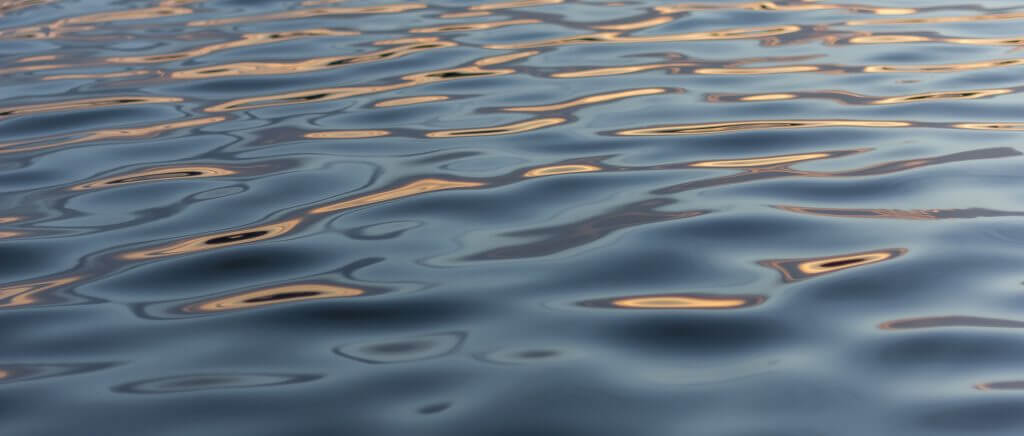Canadians should care about nuclear contamination in the Great Lakes
What you should know about its ecological and health effects
Andrew Reeves@reevesreport

Here’s the question at the heart of it: Should we be worried about radioactive waste leaching into the Great Lakes? Absolutely we should, notes a coalition of 110 Canadian and American environmental groups. For a year they’ve been calling on both governments to reduce what they believe are the harmful ramifications of radioactive isotopes in humans.
Gauging the extent of nuclear contamination in the Great Lakes is daunting. Yet a report released in March 2016 by the Canadian Environmental Law Association proposed a simple solution: List radionuclides, a form of unstable radioactive atom, as a “chemical of mutual concern” under the Great Lakes Water Quality Agreement. By listing the radioactive agent as one to watch, Ottawa and Washington would commit themselves to understanding the severity of the problem, all while developing control strategies to reduce any hazardous ecological or health impacts.
Since 1972, Canada and the United States jointly agreed to restore and maintain the “chemical, physical, and biological integrity” of the Great Lakes. And in May 2016, both countries released the first set of eight chemicals they committed to monitor. Some usual suspects—mercury and polychlorinated biphenyls—were included alongside newcomer flame retardants and acids.
Radionuclides didn’t make the cut, an oversight that means “the most comprehensive environmental monitoring program for the lakes” cannot be applied to them, Canadian Environmental Law Association (CELA) head Theresa McClenaghan said at the time.
Known as isotopes, radionuclides emit energy as radiation as they seek stability. This speeds their decay; while some deteriorate rapidly, other isotopes remain in an environment for millions of years. It’s the power of this breakdown that allows radionuclides to damage living tissue, causing lung and bone cancer, mutated DNA, birth defects, and leukemia.
While radionuclides do exist organically in the Great Lakes region (most commonly from uranium, used in nuclear fuel), it is human activity that’s made the basin a “hot-bed for nuclear-related activity,” notes John Jackson, CELA director and the report’s lead author.
More than 30 pieces of nuclear infrastructure have been built around the four lower Great Lakes over the past six decades. Uranium mines, nuclear waste sites, power plants—all brought dangerous elements to the province’s radioactive mix. Iodine-129, one isotope commonly used in Ontario in nuclear fuel bundles, has a half-life of 15.7 million years; it’s also known to destroy thyroids.
Cumulative impacts matter. Any new addition of radionuclides to the Great Lakes, however small, Jackson notes, compounds the effects of harmful isotopes already present. And unlike rivers or oceans where water turnover happens quickly, the Great Lakes are a relatively closed system. Lake Superior, for example, needs almost two centuries to replace its water, trapping damaging radionuclides for generations.
Mark Mattson, head of Lake Ontario Waterkeeper, told current events show The Agenda late last year that nowhere else on Earth is the same water that’s needed to cool nuclear facilities also used by 45 million people for drinking water. That’s a dangerous anomaly that should give everyone pause. “We don’t have extra-special protections that I think are warranted given how much we rely on the Great Lakes,” he said.
Not everyone agrees that radionuclides are a clear danger. David Shoesmith, the Industrial Research Chair in the University of Western Ontario’s chemistry department (a position funded in part by nuclear operator Ontario Power Generation), says there is “no reason whatsoever” for Ottawa and Washington to list radionuclides as a chemical of mutual concern.
Their presence in the Great Lakes is insignificant, Shoesmith tells me. “The only sources for significant levels of radionuclides in that water would be from whatever nuclear reactors there are on the shoreline,” he said. “And whatever they emit, which would be incredibly small if anything at all, would be already noted and dealt with” by power producers and regulated by a host of monitors as mandated by federal and international law.
“Radioactivity is a fact of life whether we want to think about it or not,” Shoesmith adds. And the chance of radionuclides escaping from a nuclear facility “is as close to zero as we can guarantee.”
Despite this, why choose to stifle our knowledge of and ability to act on the danger of something as grave as nuclear waste in our drinking water? Listing radionuclides as a chemical of mutual concern upholds the spirit (and the legal obligations) of the Water Quality Agreement that Canada and America signed back in ’72. And, more critically, such a move could make both countries better informed of nuclear power’s potential pitfalls. This is crucial at a time when we’re debating nuclear licence renewal in Ontario and deciding what underground reservoir will have the dubious honour of housing some of the 37 million kilograms of nuclear waste currently sitting in storage cells across the province.
“There is no level of radionuclides below which exposure can be defined as ‘safe,’” Jackson notes ominously in his report. He’s right. And while Shoesmith’s point that radioactivity is a fact of life is well taken, our overwhelming reliance on the Great Lakes to sustain the lives of millions residing in the basin trumps any call for complacency. After all, we were reckless in situating nuclear power plants deep in the belly of Canada’s most populous province. Let’s at least be bold in knowing the dangers we face.